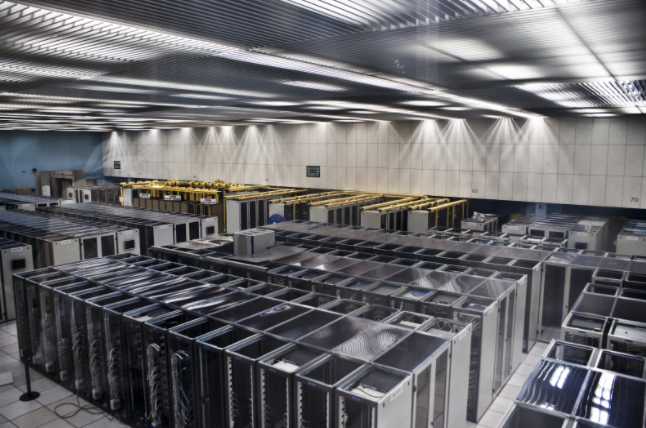
[ 위즈덤 아고라 / 황찬석 기자 ] Just when you thought that your digital lifestyle was environmentally harmless, studies show that your online presence leaves behind an offline footprint.
Contrary to popular belief, watching Netflix and video calling through Zoom – everyday things digital consumers do – contribute to carbon dioxide emissions in the same way factories and cars do. As such, your online habits dictate the impact you have on the environment.
That’s not to say the consequences of digital consumption are far worse than those of non-digital, offline activities such as driving, but rather, the duality of internet-streaming services and their impact, once thought to be solely intangible, should not be overlooked.
At large, digital technologies account for almost 4% of world-wide greenhouse gas emissions. In short, because the internet heavily relies on data centers and physical servers that are operated through undersea cables and power sources that expend great quantities of fossil fuels, the more internet we use, the more CO2 is created. As a matter of fact, a recent 2020 study presents a startling observation: the type of activity we do on the internet largely determines our carbon, water, and land footprint. In relevance to our world today, Purdue and Yale University find that streaming data-intensive services like Zoom and Netflix emit more than twice the amount of CO2 than using Facebook and Whatsapp, and similarly, the maximum water and land footprint from these video platforms are three-fold of others.

Moreover, even within these web-services, we may unconsciously make decisions that further accumulate to our environmental footprint. For example, streaming a Netflix series in high-definition rather than standard-definition can increase the energy consumption by 86%. Similarly, while the average 1 hour Zoom video-conference can emit up to 1 kg of CO2 and use almost 12 liters of water, scientists have found that turning your camera off for an hour can reduce net footprint by a significant 96%.
Indeed, with the increasing pool of digital consumers, Kavesh Madani, an environmental scientist at Yale, says, “Without your consent, these platforms are increasing your environmental footprint … If you just focus on one type of footprint, you miss out on others that can provide a more holistic look at environmental impact.”
These digital services have served as indispensable parts of online infrastructure, especially during the pandemic where learning and work is done virtually. They have become a necessity to everyday life, and with a 20% increase in Internet traffic since the outbreak in March 2020, by the end of 2021, according to Sciencedirect, an additional 71,600 trees will be needed to neutralize carbon emissions and 300,000 olympic-size swimming pools in order to compensate for water depletion.
많은 사람들이 디지털 생활이 환경적으로 해롭지 않다고 생각하지만, 이에 관련한 연구는 우리의 온라인 라이프가 지구에 많은 탄소발자국을 남긴다는 것을 말해주고 있다.
일반적인 믿음과는 달리, 디지털 소비자가 일상적으로 하는 영상통화인 줌(Z00M)과 넷플릭스의 시청으로 공장과 자동차가 하는 것과 같은 이산화탄소 배출을 한다. 결국 온라인 활동이 지구 환경에 영향을 주는 것이다.
그렇다고 해서 디지털 소비의 결과가 운전과 같은 비디지털 오프라인 활동의 결과보다 훨씬 더 나쁘다는 것은 아니지만, 인터넷 스트리밍 서비스가 환경에 영향이 없을 것이라고 생각했던 것과는 달리, 간과해서는 안 될 문제이다.
일반적으로 디지털 기술은 전 세계 온실가스 배출량의 거의 4%를 차지한다. 요컨대 인터넷은 해저케이블을 통해 운영되는 데이터 센터와 물리적 서버에 크게 의존하고 있기 때문에 화석연료를 많이 소비하는 전력 환경에서는 인터넷을 많이 사용할수록 더 많은 이산화탄소가 발생한다.
최근, 2020년 연구는 놀라운 결과를 보여주고 있다. 우리가 인터넷에서 하는 활동의 유형이 우리의 탄소, 물, 그리고 땅의 발자국을 크게 결정한다. 오늘날 우리의 세계와 관련하여, Purdue와 Yale University는 Zoom과 Netflix와 같은 스트리밍 데이터 집약적인 서비스가 Facebook과 Whatsapp을 사용하는 것보다 두 배 이상의 CO2를 배출하고 있으며, 비디오 플랫폼은 다른 디지털 사용보다 최대 세 배에 이른다.
더욱이, 웹 서비스를 어떻게 이용하느냐에 따라 탄소 발자국에 영향을 미친다. 예를 들어, 넷플릭스 시리즈를 표준 화질이 아닌 고화질로 스트리밍 하면 에너지 소비를 86%까지 증가시킬 수 있다. 마찬가지로, Zoom 이용 시 비디오를 켜고 평균 1시간을 통화하면, 최대 1kg의 이산화탄소를 배출하고 거의 12L의 물을 사용하는 것과 마찬가지다. 과학자들은 카메라를 한 시간 동안 끄면 순 발자국을 96% 줄일 수 있다는 것을 밝혔다.
실제로, 디지털 소비자의 수가 증가함에 따라 예일대의 환경 과학자인 Kavesh Madani는 “당신의 동의 없이, 이 플랫폼들은 당신의 탄소 발자국을 증가시키고 있습니다. 만약 여러분이 눈에 보이는 탄소 발자국에만 집중한다면, 여러분은 환경에 미치는 영향을 다른 것들을 놓치게 될 것입니다.”라고 전했다.
이러한 디지털 서비스는 특히 학습과 업무가 가상으로 이루어지는 유행병 기간 동안 온라인 인프라의 사용은 늘어났다. 우리 일상생활의 필수품이 되었고, 사이언 디렉트는 2020년 3월 발생 이후 인터넷 트래픽이 20% 증가하면서 2021년 말까지 탄소배출량을 무력화할 수 있는 나무 7만 1,600그루와 물 고갈을 보완하기 위해서도 30만 그루가 추가로 필요할 것으로 내다봤다.





